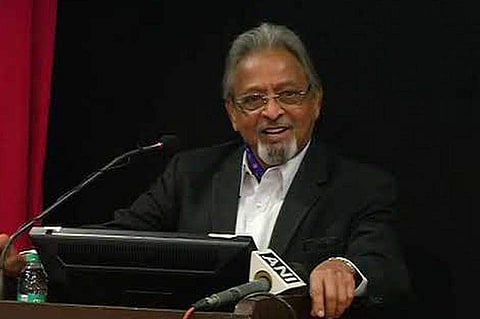

As the news of the death of renowned historian and academician Dr Shadakshari Settar spread, his students and people close to him remembered the time spent with him. This Ballari-born historian, who completed his studies in Mysuru and Dharwad, did his PhD at Cambridge University in England. He has taught thousands of students during his service as an academician from 1970 to 1996.
Dr Ramesh Naik, currently the Head of Ancient Indian History and the Archeology Department, Kannada University in Hampi was a student of Dr Settar. He says, "He retired from the Karnatak University in Dharwad in 1996. Fortunately, I belonged to the last batch of his service in the university and I am very happy to be called his student. He taught South Indian History when I was pursuing my MA in History. One of the positive points about him as a professor was that he would never miss taking classes. At that point, he was associated with several foreign universities and organisations for archaeological projects and survey. Though he would go on foreign tours quite often, he never let his work impact classes. And we would also make the most of his classes. Soon after finishing his syllabus, he would inform us about two extra classes specially meant to clear our doubts."
Further, Ramesh told us about a fact that most of us might not know about Professor Shettar. He says, "Professor Settar was originally a literature student. When he went to Mysore University to attend the classes of a famous Indian writer and literary critic, Closepet Dasappa Narasimhaiah, his class was delayed and Settar happened to attend Dr S Srikanta Sastri's history class. That's how he got interested in History and continued to do his Masters in History from Mysore University."
According to Ramesh, Professor Settar was the only person who worked as an archaeologist, historian and a writer in the 20th century. He says, "It is a big deal to work as a historian and then a writer. Because most people think that history is a boring subject. However, Settar changed that perception as he presented history in an interesting way in his books. Prof Settar will continue to remain a great pride to South Indians because he was the first person from South India to become a Director of the Indian Council of Historical Research in New Delhi (1996-1999). After this, Bengaluru got a regional office of ICHR and there was great progress. If we talk about his achievements, then the list is endless."
Another student, Arun Jolada Kudalagi who is a post-doctoral fellow at the Kannada University in Hampi worked with Professor Settar during the Ballari Sahitya Sammelana in 2016. Narrating some of his special memories and experiences with him, he says, "He was a person of great prominence but remained grounded. When he prepared for a speech to be delivered at the Sahithya Sammelana, he included some of young writers names and their books. Prof Settar mentioning the names of young writers is really a big deal. In the history of Sahithya Sammelana, I think, Prof Settar's speech was the best one."
A folk tale associated with Prof Settar's family
It is true that Professor Settar came from a wealthy family but there is a funny and beautiful folk tale attached to it. Arun explains, "Professor Settar is originally a native of Hampasagar near Ballari district. According to one of the folk tales or Janapada songs, when the Vijayanagara kingdom was exploited and looted of all its wealth, two camels which were carrying a huge amount of gold and diamonds got tired and stopped right in front of Dr Settar's house. That's how the family became rich, people say. However, there is no proof of such stories."
Some interesting facts of Professor Settar
Prof Settar pursued his PhD from Cambridge University in England
Settar was appointed as the director of the Institute of Indian Art History(1978-96) at Karnatak University, Dharwad
He was a Director, of the National Museum Institute of the History of Art, Conservation and Museology in 1978
